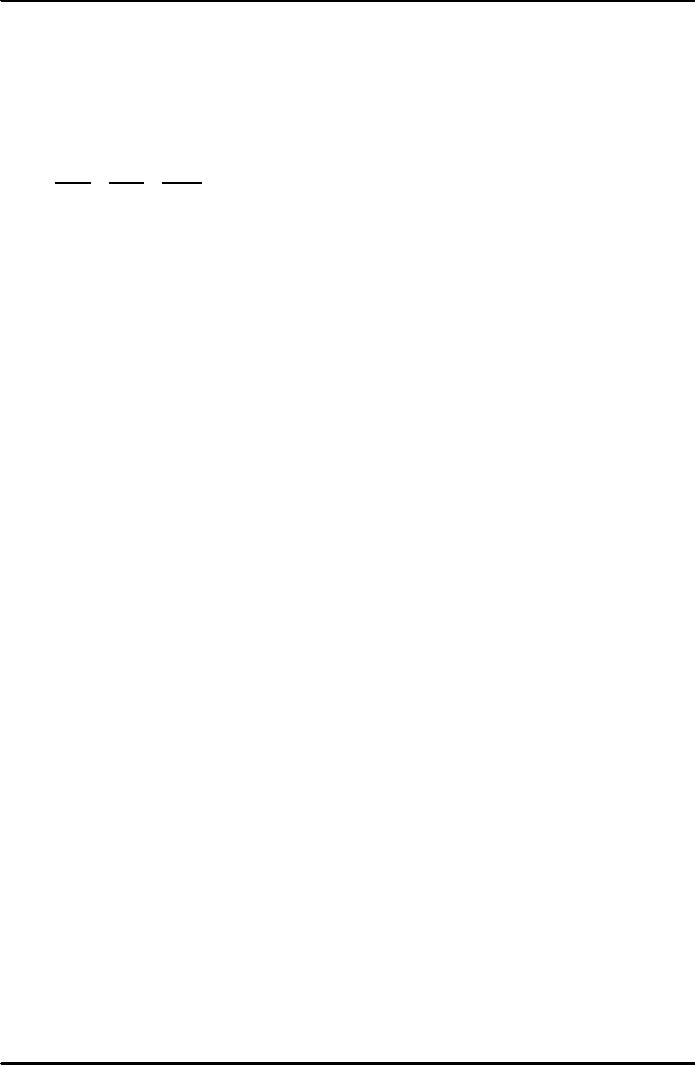 |
BACKGROUND TO DEMAND/CONSUMPTION:CONSUMER BEHAVIOR |
| << ELASTICITIES (CONTINUED………….):Short Run and Long Run, Incidence of Taxation |
| BACKGROUND TO DEMAND/CONSUMPTION (CONTINUED…………….) >> |

Introduction
to Economics ECO401
VU
UNIT
- 4
Lesson
4.1
BACKGROUND
TO DEMAND/CONSUMPTION
Scarcity
and Rational
Choice:
Although
scarcity, as defined in Lectures
1-2 was of a different
nature, the most common
form
of
scarcity is the scarcity of
income, i.e., the money
resources are limited and
consumers are
faced
with the decision on how to
spend those scarce resources
on different goods
and
services.
Rational
choice consists in evaluating
the costs and benefits of
different decisions and
then
choosing
the decision that gives
the highest benefit relative
to cost.
While
taking decisions, economics
stress the importance of
weighing the marginal
costs
against
marginal benefits rather
than total costs and
benefits.
Ignorance
and Irrationality:
There
is a difference between "ignorance"
and "irrationality." A person
operating under
uncertainty
and thus at least partial
ignorance can still make
rational decisions by taking
into
account
all the information she
has at her disposal.
Rationality is an ex-ante
concept.
Economists
do not judge rational
behavior on the basis of
actual outcomes, rather on
the basis
of
choices made.
CONSUMER
BEHAVIOR:
There
are two approaches to
analyzing consumer
behavior;
·
Marginal
utility analysis
·
Indifference
curve approach.
Marginal
Utility Approach:
Marginal
utility approach involves
cardinal measurement of utility,
i.e., you assign exact
values
or
you measure utility in exact
units, while the
indifference curve approach is an
ordinal
approach,
i.e., you rank possibilities
or outcomes in an order of preferences,
without assigning
them
exact utility values.
Utility
is
the usefulness, benefit or
satisfaction derived from
the consumption of goods
and
services.
Total
utility is the
entire satisfaction one
derives from consuming a
good or service.
Marginal
utility is the
additional utility derived
from the consumption of one
or more unit of the
good.
The
Law of Diminishing Marginal
Utility:
The
law of diminishing marginal
utility states that as you
consume more and more of
a
particular
good, the satisfaction or
utility that you derive
from each additional unit
falls.
The
marginal utility curve
slopes downwards in a MU-Q
graph showing the principle
of
diminishing
marginal utility. The MU
curve is exactly equal to
the demand curve.
The
total utility curve starts
at the origin and reaches
the peak when marginal
utility is zero.
Marginal
utility can be derived from
total utility. It is the
slope of the lines joining
two adjacent
points
on the TU curve.
Marginal
utility functions can also
be derived using
calculus.
Consumer
Surplus and Optimal Point of
Consumption:
Consumer
surplus is the difference
between willingness to pay
and what the
consumer
actually
has to pay: i.e. CS= MU-P.
Total consumer surplus is
the area between the MU
curve
and
the horizontal market price
line. Thus as price
increases, consumer surplus
shrinks, and
vice
versa.
28

Introduction
to Economics ECO401
VU
The
optimal point of consumption is
that point where consumer
surplus becomes zero.
If
marginal
utility is greater than
price, consumption will
increase causing MU to fall
until it equals
price,
and vice versa.
The
Equi-marginal Principle:
In
the case of more than
two goods, optimum
consumption point can be
arrived at by using
the
equi-marginal
principle. This states that
a person will derive a
maximum level of TU
from
consuming
a particular bundle of goods
when the utility derived
from the last dollar
spent on
each
good is the same:
MUa
= MUb = MUc ................
Pa
Pb
PC
Supply
Side and Demand Side
Views on the Value of
Good:
According
to the supply side view on
the value of a good, the
value of a good was
determined
by
the labor content that
had gone into producing
good, either directly or
indirectly.
According
to the demand side view on
the value of a good, the
value of a good was
determined
by its marginal utility.
This helped solve the
diamond-water paradox, i.e.
why
diamonds
have such a high price
while water (much more
essential for life) sell so
cheaply.
29
Table of Contents:
- INTRODUCTION TO ECONOMICS:Economic Systems
- INTRODUCTION TO ECONOMICS (CONTINUED………):Opportunity Cost
- DEMAND, SUPPLY AND EQUILIBRIUM:Goods Market and Factors Market
- DEMAND, SUPPLY AND EQUILIBRIUM (CONTINUED……..)
- DEMAND, SUPPLY AND EQUILIBRIUM (CONTINUED……..):Equilibrium
- ELASTICITIES:Price Elasticity of Demand, Point Elasticity, Arc Elasticity
- ELASTICITIES (CONTINUED………….):Total revenue and Elasticity
- ELASTICITIES (CONTINUED………….):Short Run and Long Run, Incidence of Taxation
- BACKGROUND TO DEMAND/CONSUMPTION:CONSUMER BEHAVIOR
- BACKGROUND TO DEMAND/CONSUMPTION (CONTINUED…………….)
- BACKGROUND TO DEMAND/CONSUMPTION (CONTINUED…………….)The Indifference Curve Approach
- BACKGROUND TO DEMAND/CONSUMPTION (CONTINUED…………….):Normal Goods and Giffen Good
- BACKGROUND TO SUPPLY/COSTS:PRODUCTIVE THEORY
- BACKGROUND TO SUPPLY/COSTS (CONTINUED…………..):The Scale of Production
- BACKGROUND TO SUPPLY/COSTS (CONTINUED…………..):Isoquant
- BACKGROUND TO SUPPLY/COSTS (CONTINUED…………..):COSTS
- BACKGROUND TO SUPPLY/COSTS (CONTINUED…………..):REVENUES
- BACKGROUND TO SUPPLY/COSTS (CONTINUED…………..):PROFIT MAXIMISATION
- MARKET STRUCTURES:PERFECT COMPETITION, Allocative efficiency
- MARKET STRUCTURES (CONTINUED………..):MONOPOLY
- MARKET STRUCTURES (CONTINUED………..):PRICE DISCRIMINATION
- MARKET STRUCTURES (CONTINUED………..):OLIGOPOLY
- SELECTED ISSUES IN MICROECONOMICS:WELFARE ECONOMICS
- SELECTED ISSUES IN MICROECONOMICS (CONTINUED……………)
- INTRODUCTION TO MACROECONOMICS:Price Level and its Effects:
- INTRODUCTION TO MACROECONOMICS (CONTINUED………..)
- INTRODUCTION TO MACROECONOMICS (CONTINUED………..):The Monetarist School
- THE USE OF MACROECONOMIC DATA, AND THE DEFINITION AND ACCOUNTING OF NATIONAL INCOME
- THE USE OF MACROECONOMIC DATA, AND THE DEFINITION AND ACCOUNTING OF NATIONAL INCOME (CONTINUED……………..)
- MACROECONOMIC EQUILIBRIUM & VARIABLES; THE DETERMINATION OF EQUILIBRIUM INCOME
- MACROECONOMIC EQUILIBRIUM & VARIABLES; THE DETERMINATION OF EQUILIBRIUM INCOME (CONTINUED………..)
- MACROECONOMIC EQUILIBRIUM & VARIABLES; THE DETERMINATION OF EQUILIBRIUM INCOME (CONTINUED………..):The Accelerator
- THE FOUR BIG MACROECONOMIC ISSUES AND THEIR INTER-RELATIONSHIPS
- THE FOUR BIG MACROECONOMIC ISSUES AND THEIR INTER-RELATIONSHIPS (CONTINUED…….)
- THE FOUR BIG MACROECONOMIC ISSUES AND THEIR INTER-RELATIONSHIPS (CONTINUED…….):Causes of Inflation
- THE FOUR BIG MACROECONOMIC ISSUES AND THEIR INTER-RELATIONSHIPS (CONTINUED…….):BALANCE OF PAYMENTS
- THE FOUR BIG MACROECONOMIC ISSUES AND THEIR INTER-RELATIONSHIPS (CONTINUED…….):GROWTH
- THE FOUR BIG MACROECONOMIC ISSUES AND THEIR INTER-RELATIONSHIPS (CONTINUED…….):Land
- THE FOUR BIG MACROECONOMIC ISSUES AND THEIR INTER-RELATIONSHIPS (CONTINUED…….):Growth-inflation
- FISCAL POLICY AND TAXATION:Budget Deficit, Budget Surplus and Balanced Budget
- MONEY, CENTRAL BANKING AND MONETARY POLICY
- MONEY, CENTRAL BANKING AND MONETARY POLICY (CONTINUED…….)
- JOINT EQUILIBRIUM IN THE MONEY AND GOODS MARKETS: THE IS-LM FRAMEWORK
- AN INTRODUCTION TO INTERNATIONAL TRADE AND FINANCE
- PROBLEMS OF LOWER INCOME COUNTRIES:Poverty trap theories: